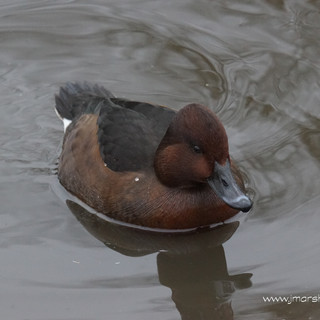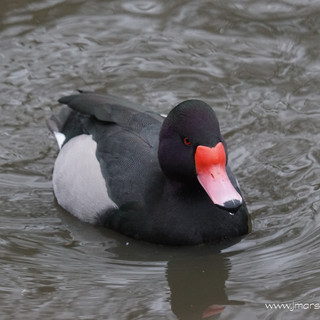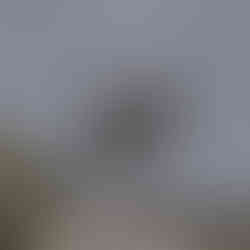PINTAILS GALORE @ MARTIN MERE WWT
- Jonathan Marshall
- Jan 9, 2020
- 8 min read
Updated: Oct 16, 2020
On Thursday I made the trip across the Pennines to visit a wetland nature reserve called Martin Mere which is managed by the Wildfowl & Wetland Trust. The site was opened by Sir Peter Scott in 1975 and is situated near the village of Tarlscough, 10 miles east of Southport. Half of the site is taken up by enclosures containing rare and endangered Wildfowl species from around the world such as Cape Teals, Falcated Ducks and Wood Ducks as well as Flamingos, Cranes and Storks.
The other half of the site is the wetland nature reserve which has ten hides and in the winter attracts large numbers of Pink Footed Geese, Wigeon, Shelducks and Whooper Swans as well as birds of prey such as Peregrine Falcons, Merlins and Hen Harriers. It had been a long and slow journey across the M62 due to very heavy traffic and I arrived around half past eleven. Before I headed out to look at the rare wildfowl I headed to the cafe for an early lunch.
Once I had had my lunch I looked at the water next to the cafe and visitor centre where I could see Pintails, Mandarin Ducks, Bewick Swans and a large number of Shelducks. I made my way through the visitor centre and shop and emerged alongside a pond to my left where I could see several Eider Ducks and a couple of Cape Teals. At the far end of the pond were a couple more Eider Ducks and at the far side were more than thirty Greater Flamingos.

I opened the gate at the far side of the enclosure and stepped through to the next one where in the water to my left I saw several Ferrugnious Ducks. Asleep on the path were several Red Breasted Geese with a couple taking a break from their slumber to preen themselves. On the next pond were several Red Crested Pochards, an Argentine Ruddy Duck and a bird I had been lucky enough to see in the wild in Canada in 2018, the Hooded Merganser. The Hooded Merganser is quite unique with the male having the ability to raise the crest along the top of its head when displaying courtship behaviour, almost inflating its head when doing so.
A little further along the path I arrived at an aviary which housed White Faced Whistling Ducks, Avocets and a pair of Grey Crowned Cranes. From here I followed the path round the outside of the aviary where on my right were a pair of Magpie Geese and on my left a pair of Southern Screamers which lived up to their name as I walked past. After a short distance I arrived at a large pond on my right, whilst on my left was a small pond were at the edge were five sleeping Smews and on the water a trio of Bufflehead Ducks.

On another of the ponds to my left were Yellow Billed Ducks and Fulvous Whistling Ducks whilst a little further along I spotted another bird I had seen in Canada, the Wood Duck. There were also several Goldeneyes on this pond and there was a wooden walkway through over the pond which was accessed through a wooden building. I took the path through this building and onto the walkway to have a closer look at the Wood Ducks and Goldeneyes and as the walkway turned to the right another pond was on my left.
On this pond I could see American Wigeons and Ring Necked Ducks whilst beyond the pond, perched on a branch, I could see a Robin. I went through the gate at the edge of the enclosure and turned left towards the Robin which was just beyond another gate. As I walked through this gate the Robin stayed on the branch even as I passed within a couple of feet of it. I followed the path as it curved round towards the Chilean Flamingos and in the ponds to my left I saw Eider Ducks, Brazilian Teals, Ashy Headed Geese and Hawaiian Geese.

On the very large pond to my right I could see Puna Teals, White Cheeked Pintails, Chiloe Wigeons and a large group of vibrant pink Chilean Flamingos at the far side of the water. The path turned to the right heading towards the Flamingos and behind a fence on my left were Swan Geese, Hawaiian Geese and an absolutely stunning Falcated Duck. I now took the path that went down the side of the Flamingo building, through Eco garden to see the White Storks.
After watching the White Storks for a few minutes I walked back round to look at the Chilean Flamingos and as I watched them a Rosy Billed Pochard swam out from their building and swam across in front of me. From here I took a path past the Wood Ducks and Goldeneyes before turning to the right and then to my left I could see a pair of Black Necked Swans. From here I took the path behind the aviary and to my right I saw Emperor Geese, Goldeneyes and Smews.

The path eventually brought me to a tall wire fence with the other side being the nature reserve. I opened the gate in the fence and turned to the left and walked across to the Harrier Hide which looks out over a large reedbed area. On a patch of water I could see Black Headed Gulls, Shelducks, Mallards and Lapwings. After a few minutes another group of Lapwings flew in and landed on the water as just in front of the hide a Stoat scurried along the grass path just in front of the hide and disappeared into the reeds.
As I looked back out over the water around a dozen Snipes emerged from the reeds and flew low along the water from left to right before turning and heading down a narrow channel through the reeds. My next stop was the Janet Kear hide which was a short distance back down the path towards the visitor centre. There are several feeders and a small pond just in front of this hide and you can see some of the other hides in the far distance.

On the feeders to my right were Blue Tits, Great Tits, Chaffinches and Goldfinches whilst on the pond were a few Mallards. The other feeders to the left were also busy with Blue Tits, Goldfinches and several Greenfinches whilst a short distance behind there was a Greater Spotted Woodpecker slowly making its way up the trunk of a tree. I spent a few minutes waiting to see what else might turn up before heading along the path towards the United Utilities hide.
There were several Chaffinches, Blue Tits and Great Tits moving through the trees as I walked towards the hide. From the hide I could see several Whooper Swans and Shelducks in the distance and I now headed back down the path and turned to the left onto the main path back towards the visitor centre. I walked past the Janet Kear hide and continued on until I reached the Gladstone Hide where I could see a few Mallards in front of the hide and large numbers of Whooper Swans, Mallards, Wigeons and Shelducks.

I walked further down the path to where there was a viewing screen looking out over the mere where hundreds of wildfowl such as Mallards, Teals, Wigeons, Shelducks and numerous Pintails further out. Over to my right I noticed a Pintail which was preening itself before it made its way out into the water moving closer along the water. It was almost in front of me before it turned away and headed further out.
The path eventually returned to the visitor centre and before I visited the Discovery Hide for the wild Swan feed at 3pm I headed along a path heading westwards till after a few hundred yards it reached the Ron Barker Hide. There had been a Barn Owl reported earlier in the day hunting over the fields to the north of the hide. On the water west of the hide were Lapwings, Black Headed Gulls, Mallards and Tufted Ducks. I walked round to the north side of the hide where over to the far right hand side, perched on a wooden fence, just in front of a hedge was the Barn Owl.

I stayed for a while hoping it would move closer to the hide but it barely moved during my time in the hide so I left and headed back along the path. After a short distance I arrived at the steps leading up to the Kingfisher hide which is a circular hide looking out over the Kingfisher pool. I didn't see a Kingfisher but there were a few Blue Tits and Great Tits moving through the bushes close to the hide as well as a single Wren.
I returned to the main path and walked the short distance to the Hale hide where there was quite a lot to see! In the pond just in front of the hide were Pintails, Teals and Mallards whilst on the ground to the left of the pond were Greylag Geese, Lapwings, Mallards, Shelducks and more Pintails. Beyond the pond were several Whooper Swans, Lapwings, Teals and Mallards with several Ruff scurrying along the ground between them. As a couple of the Whooper Swans made their way towards the pond some of the Pintails exited the pond and began to make their way towards Raines Observatory which was a short distance to the left of the hide.

I now walked the short distance to the Raines Observatory which has a hide / viewing area which overlooks the right hand side of the Mere and massing in front of it were large numbers of Whooper Swans. There were also a couple of Ruffs moving across the ground, just a few feet from the hide moving along the edge of the water. It was now approaching 3pm so I made my way along the path to the very large Discovery Hide which gives you great views of the Mere and the daily wild Swan feed.
On the water I could see large numbers of Shelducks, Mallards, Greylag Geese and Whooper Swans as well as several Wigeons, Pintails and a few Pochards. Clambering over the small rocks in front of the hide were several Ruffs and about twenty yards to my right were a pair of Black Tailed Godwits. The water in front of the hide got busier and busier as it reached 3pm and as one of the reserve wardens appeared in front of the hide, the birds began to mass on the land in front of the hide.

The ground in front of the hide was now just a mass of birds with hundreds of Shelducks eating up the food that had been put out. Weaving in amongst them were Wigeons, Mallards, Pochards and Pintails as well large numbers of Greylag Geese with some of the Whooper Swans at the edge of the water. After fifteen or so minutes the birds began to thin out and I could see that there were a few Ruffs amongst the remaining ducks. Once the Whooper Swans had left and started to make their way over towards the Raines Observatory for the 3:30pm feed I left the Discovery Hide and headed back to my car to begin my journey back over the Pennines.
Like the site at Washington, Martin Mere is another excellent place to visit run by the Wildfowl & Wetland Trust. I thoroughly enjoyed my first visit to Martin Mere and look forward to visiting again in the future. I have attached quite a few photos and a full non-wild and wild sightings list from trip to Martin Mere.






















































































































































































































































































































































Comments